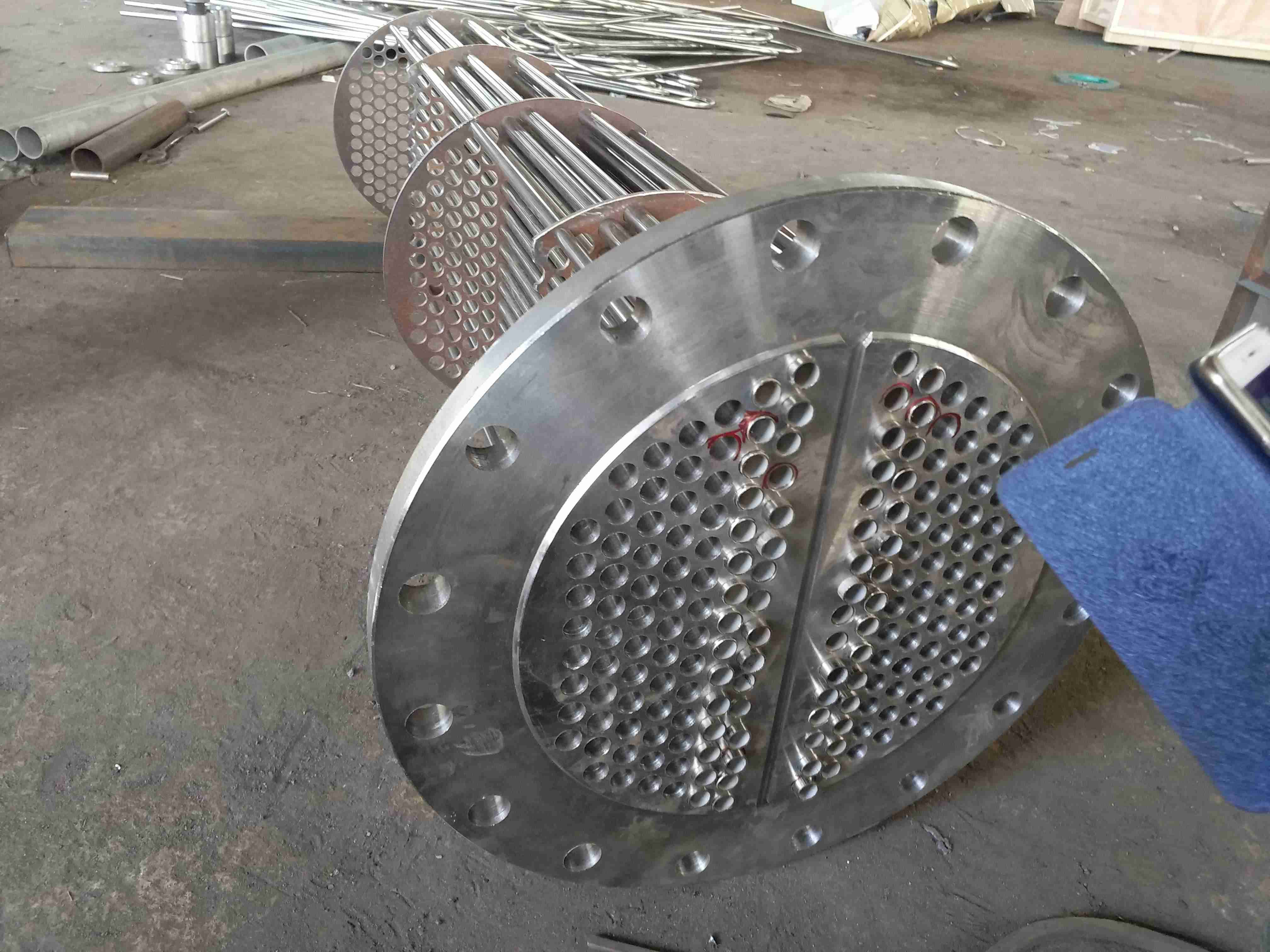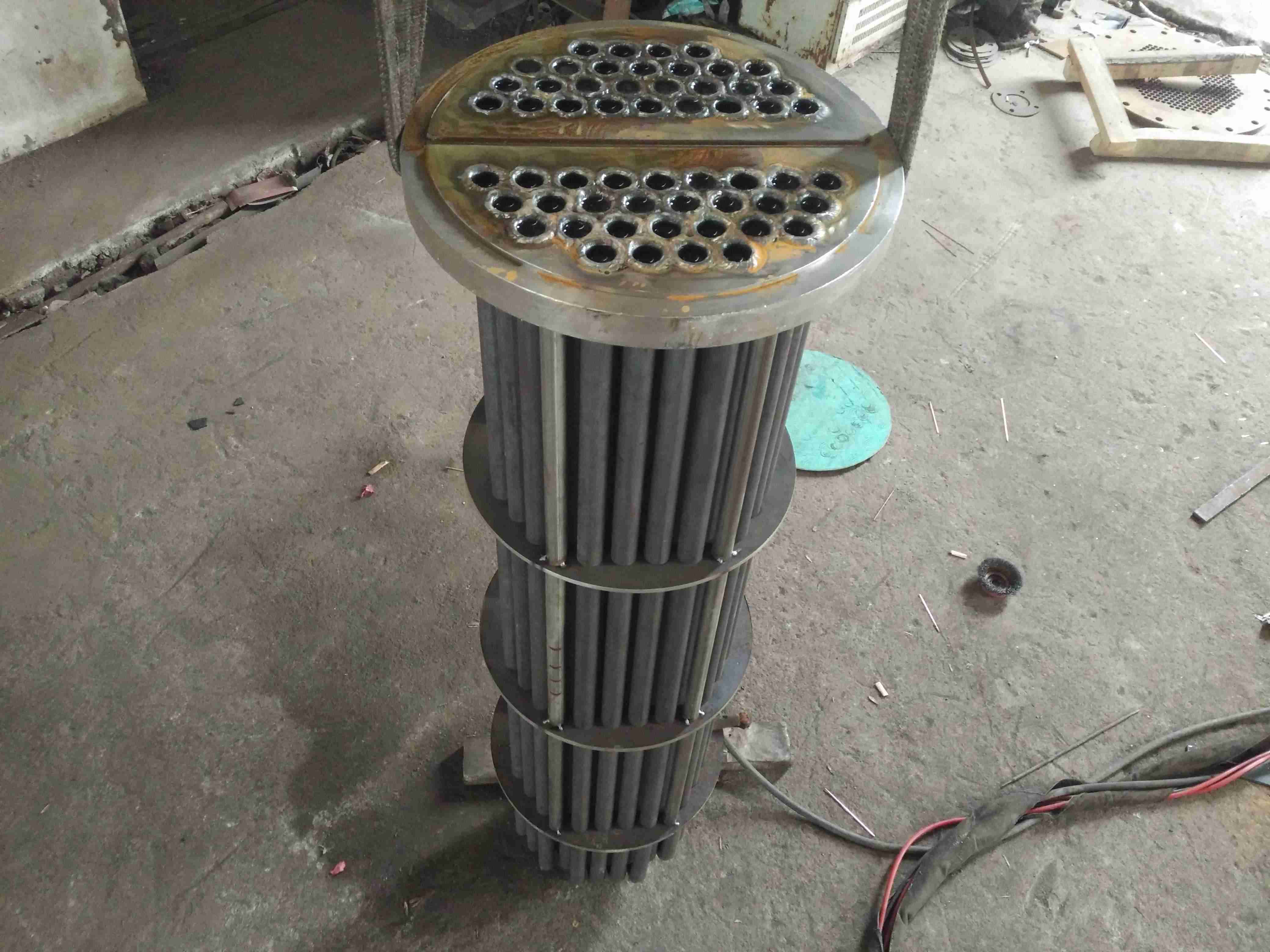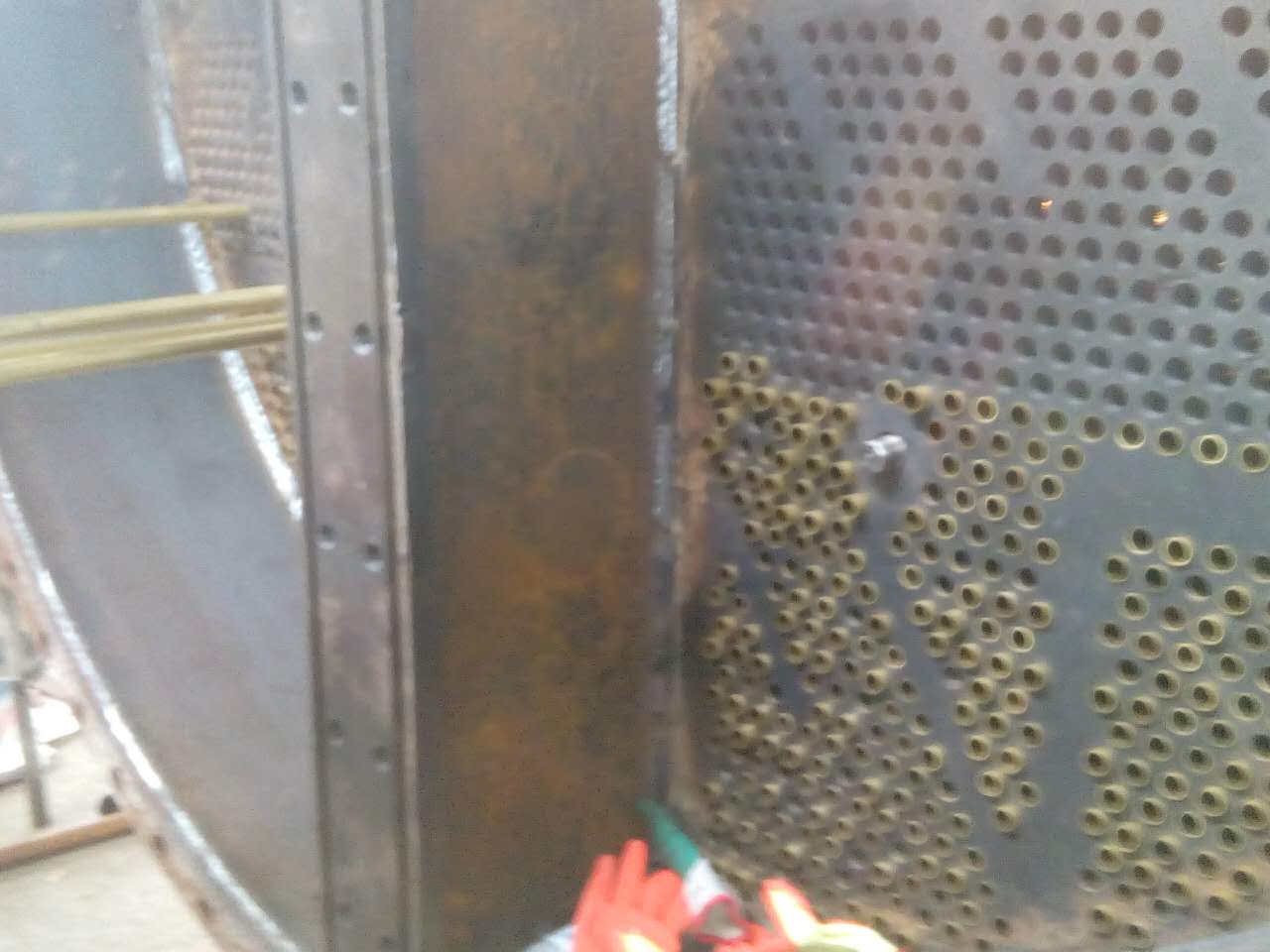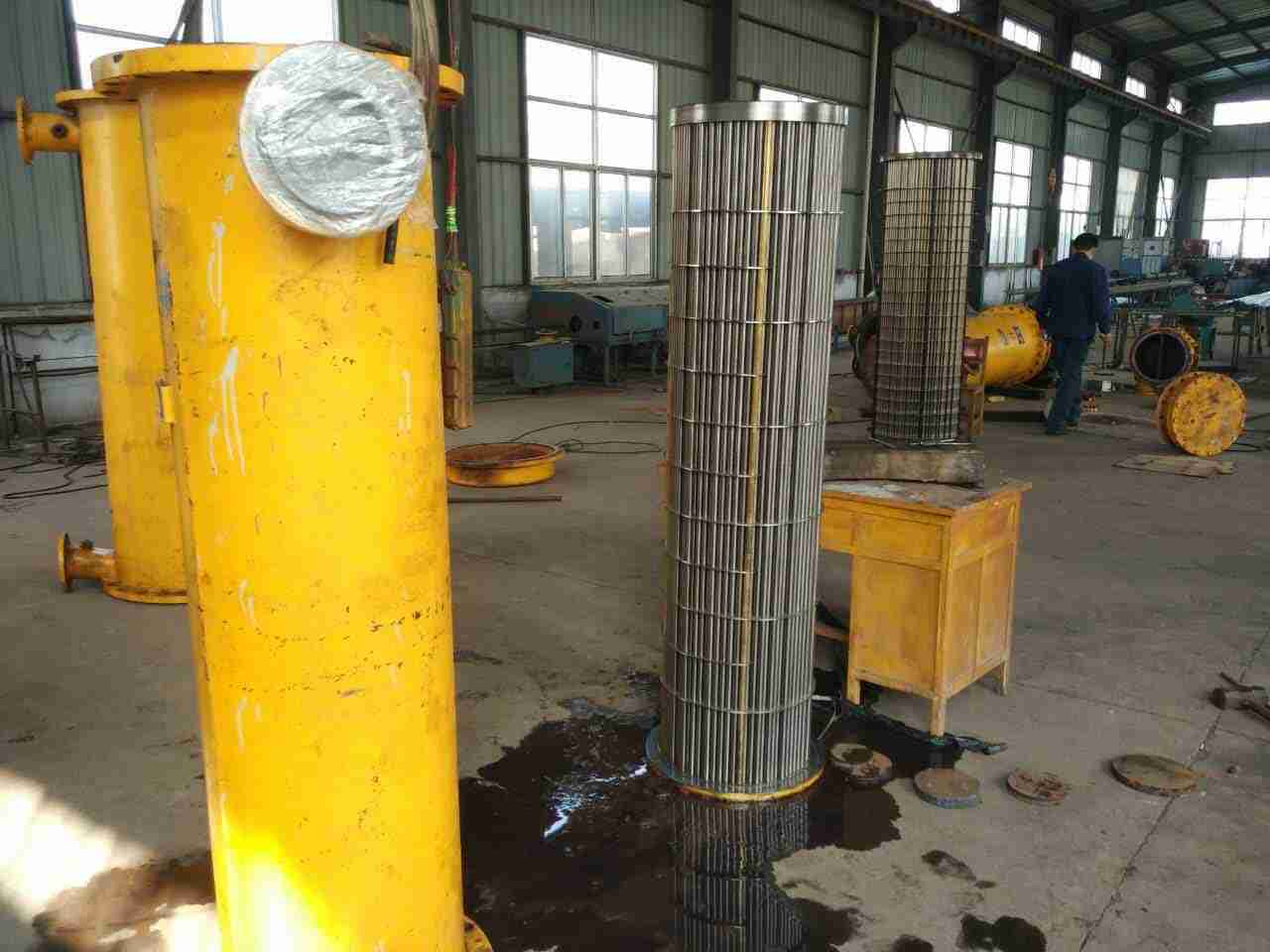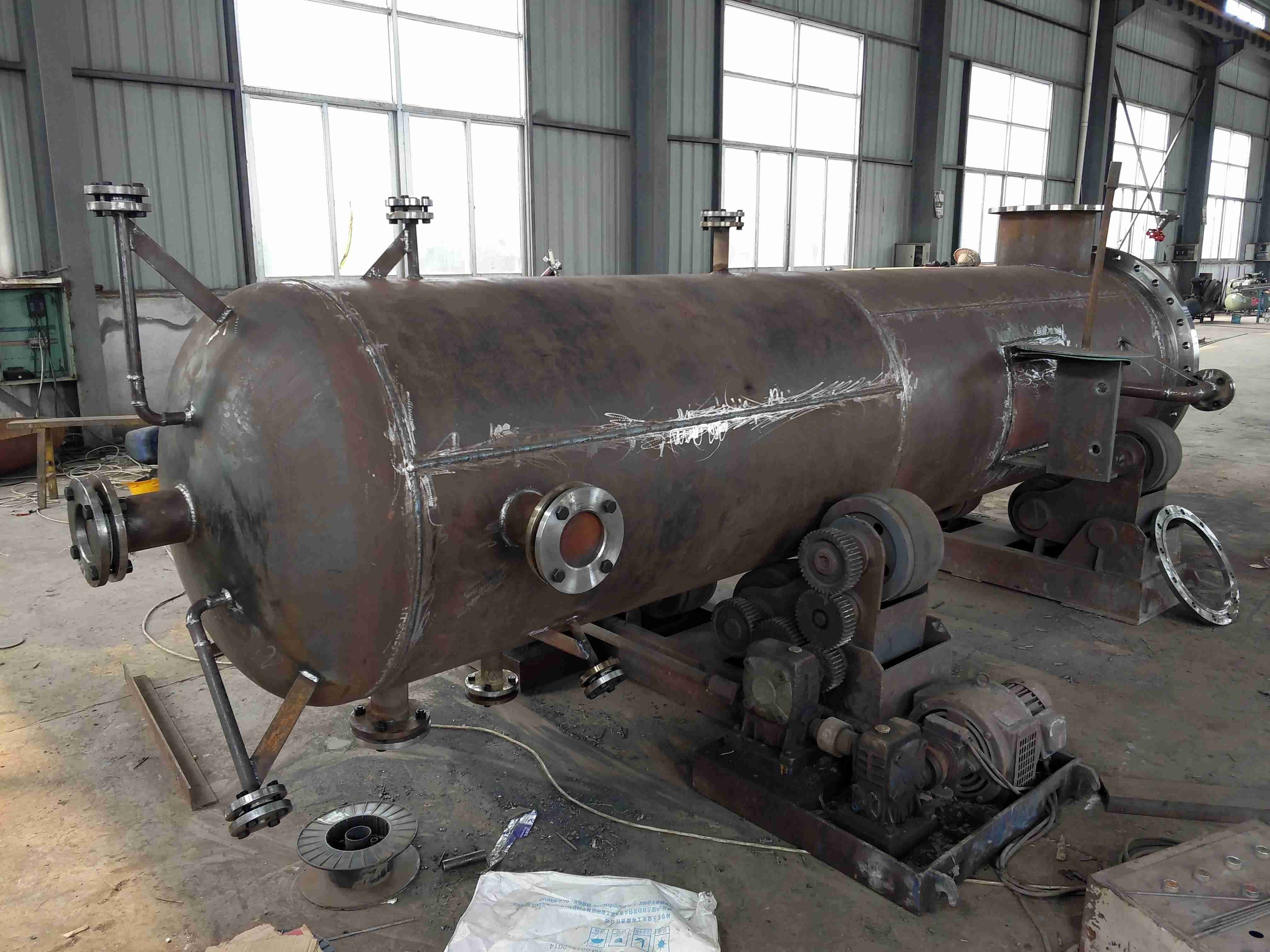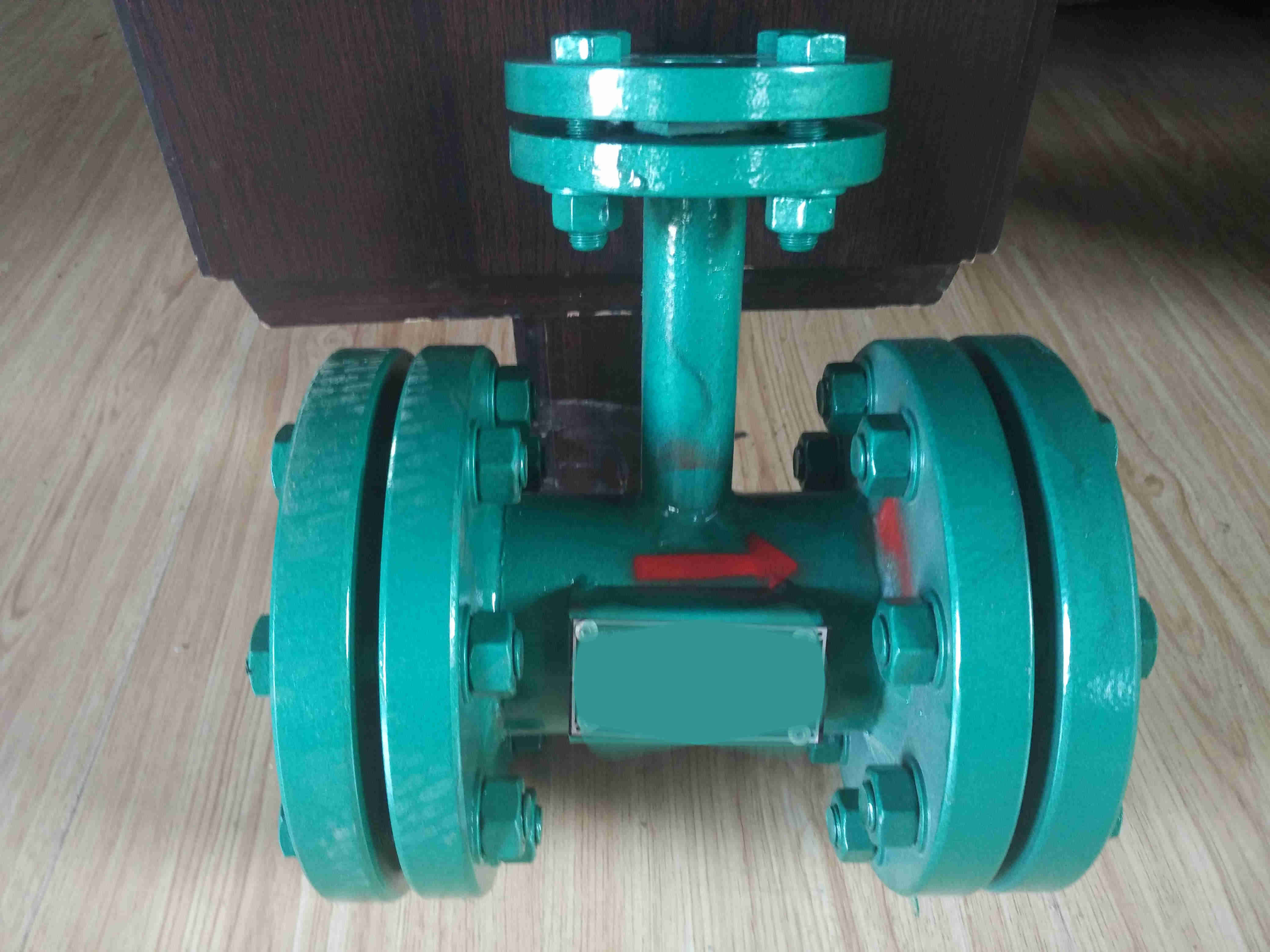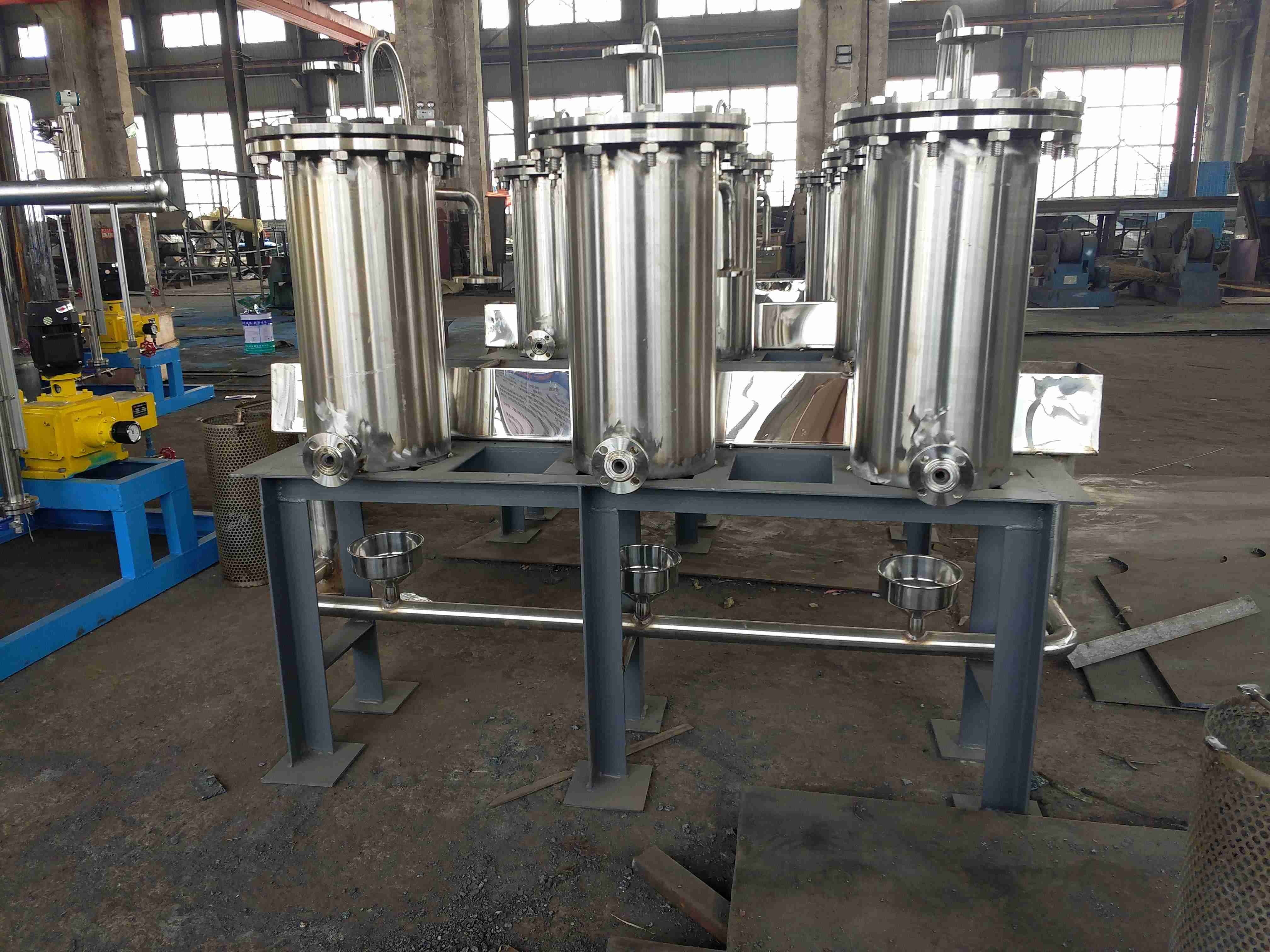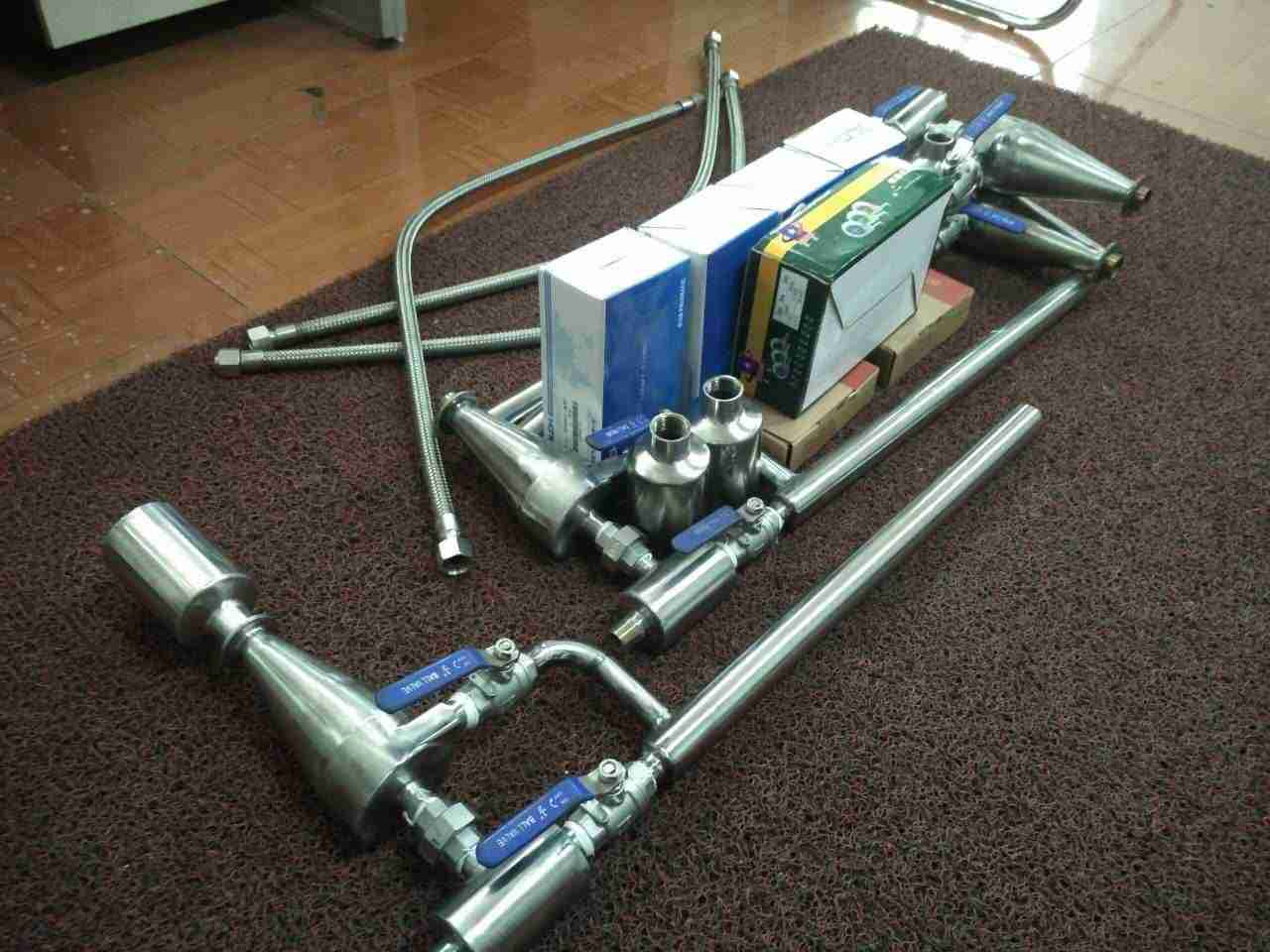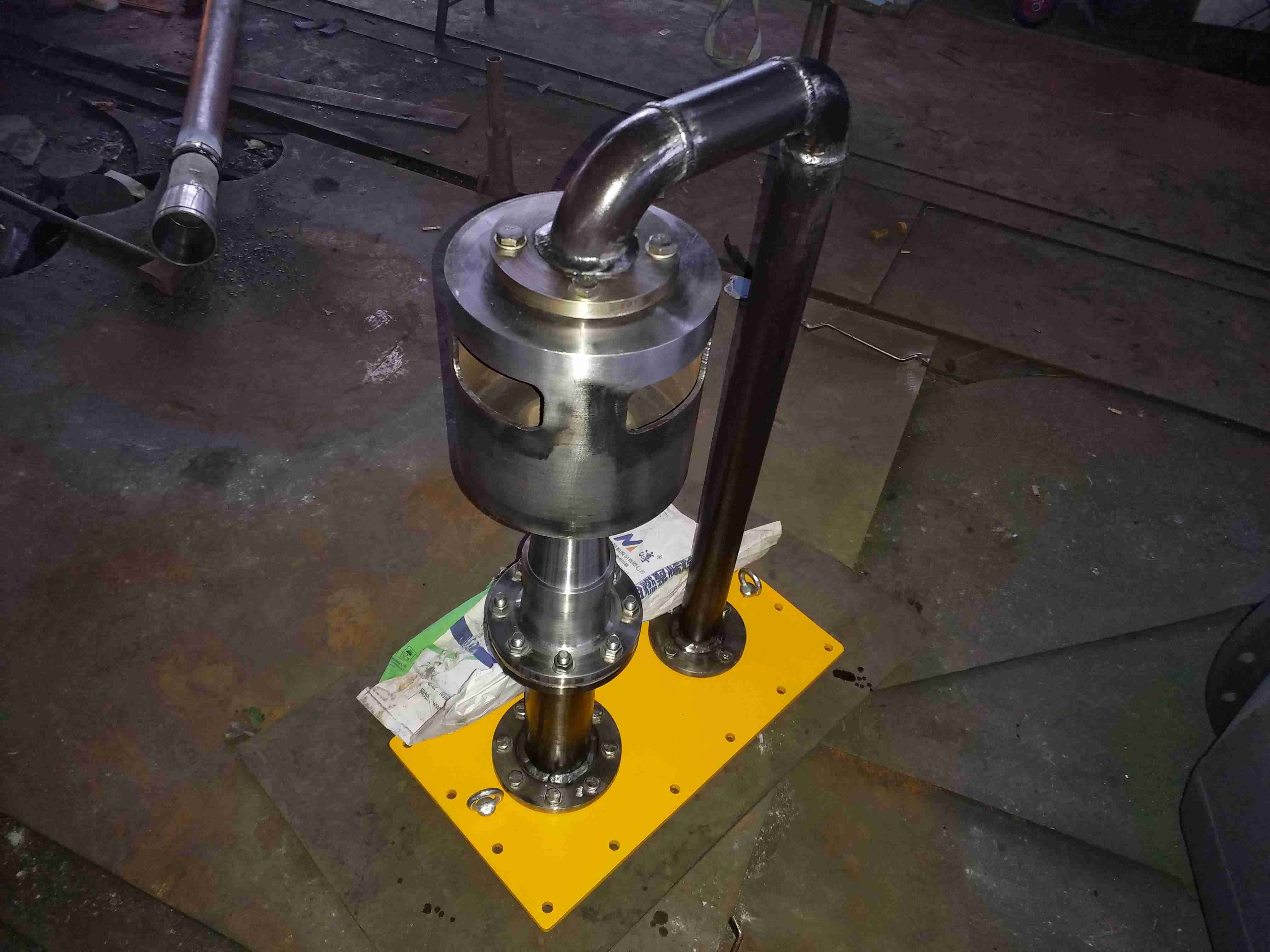Summary of stainless steel pipes:
The condenser is an essential cooling equipment for steam turbine generator units. Due to the pollution of rivers, lakes, and seawater systems, the corrosion rate of the cooling pipes in the condenser is intensified, resulting in frequent leakage of the condenser, which seriously affects normal production. At this point, it is necessary to replace the cooling pipes with stainless steel pipes - especially copper pipes that are susceptible to corrosion such as ammonia ions and sulfides, causing leakage. At the same time, due to the unsmooth inner wall of copper pipes, microorganisms and various dirt are easily attached, greatly reducing the use of copper pipes.
Welded steel pipes are mainly used for heating, oil coolers, chillers, sampling coolers, extraction coolers, heat exchangers, shaft seal heaters, high-pressure heaters, low-pressure heaters, air preheaters, air coolers, and other pipe bundles in industries such as thermal power generation, chemical engineering, and steel. Stainless steel pipe specification: diameter Ф 12~ Ф 76mm, with a wall thickness of 0.2-3.0mm, available in two lengths: fixed and indefinite- The types of stainless steel pipes used include 304, 304L, 316, 316L, 317, and 317L.
Welded steel pipes are manufactured by introducing pipe making equipment, which is equivalent to or slightly stronger than stainless steel pipes. The metallographic structure of the weld seam is slightly different from that of the base material, and the mechanical properties such as strength are also slightly different. Due to the uniform thickness and smooth surface of the stainless steel pipe strip, it is indeed better than cold drawn, hot rolled, and seam stainless steel pipes of the same material. The elongation is greater than 35%, and the hardness is small, making it easy to expand and connect.
Explanation of stainless steel pipe chart:
Classification and specifications of stainless steel pipes: stainless steel plain pipes, stainless steel threaded pipes, stainless steel corrugated pipes, 201 stainless steel threaded pipes, 304 stainless steel threaded pipes, 316L stainless steel threaded pipes, stainless steel U-shaped pipes, stainless steel finned pipes, etc. Our company's self-developed stainless steel heat exchange pipes are made of high-quality stainless steel pipes, stainless steel strips, cold drawn, hot drawn forming, and strip steel, which are rolled, welded, inspected, rolled, polished, and fused Polishing and other production processes for 304 stainless steel pipes and 316L stainless steel pipes; We can produce various specifications of pipes with different diameters, wall thicknesses, length forms, etc. according to the needs of users.
Thin walled stainless steel pipes have the following characteristics:
1. The heat transfer efficiency of the stainless steel heat exchange tube in the condenser is improved by 2.124-8.408% compared to the copper tube, as the stainless steel tube wall can be made of thin-walled stainless steel pipes with a thickness of 0.5-0.7mm, which improves the overall heat transfer efficiency.
2. Due to the use of American standard AISl304, 316l and other stainless alloy steel materials, it has a high hardness and the rigidity of the pipes is also significantly improved. Therefore, it has strong impact energy and anti vibration energy of high-temperature steam.
3. Due to the smooth inner wall of the pipe, the thickness of the bottom layer of the boundary laminar flow is reduced, which not only enhances heat transfer but also improves the ability to resist scaling.
4. Process - Energy - Using the expansion process of transmission, the outer diameter tolerance of 304/316l stainless steel heat exchange tubes is consistent with that of copper tubes, without changing the machining tolerance of the tube plate holes, which is conducive to direct on-site selection and convenient for the transformation of 304/316l stainless steel heat exchange tubes and tube bundles in the unit.
5. Economically, under the same heat exchange area, the cost of stainless steel pipes is about 80% of the cost of copper pipes, and can be directly transformed into tube bundles.
To eliminate welding stress, heat treatment is carried out at a high temperature of 1050 ℃ under shielding gas.
7. All steel pipes are subjected to pressure difference method for leakage inspection, with a pressure test reaching 1.0Mpa and a pressure drop of 5 minutes.
Seamed stainless steel cooling pipes - Safety and economy -:
The general principles of heat exchanger tubes are:
1. No severe corrosion leakage, use as long as possible, erosion and wear, vibration resistance, high heat transfer coefficient, and reasonable structure. For decades, copper pipes have been used in my condensers, oil coolers, chillers, and other equipment due to their high thermal conductivity.
2. In practice, some copper pipes of the condenser are subjected to severe ammonia corrosion, while others are subjected to severe wear and tear. These two phenomena cause copper pipes to leak tightly, greatly reducing the use of copper pipes, reducing the safety and economy of unit operation, and increasing the time for shutdown and replacement of copper pipes. Therefore, many people have started to consider the issue of condenser pipe materials.
In recent years, 304/316l stainless steel heat exchange tubes have been widely used in condensers, oil coolers, and air coolers; On low-pressure heaters, according to incomplete calculations, more than 50% of the units are used, including units of 50-300MW. The use of stainless steel heat exchange tubes breaks the traditional notion that only copper tubes can be used, improves equipment safety and economy, and reduces investment.
However, there are still many people who lack interest in heat exchange tubes, mainly because the thermal conductivity of stainless steel heat exchange tubes is much lower than that of copper tubes, and they are concerned about affecting heat transfer. For this reason, relevant units have conducted many studies on the overall heat transfer coefficient of stainless steel heat exchange tubes used in condensers, and have achieved great results. More and more power plants are replacing copper pipes with stainless steel pipes.
Cooling equipment - using 304/316l stainless steel heat exchange tubes:
Adopting advanced automated production techniques and processes. Select ASTM 304 and 316L standard stainless steel materials for good processing and production.
Seamed stainless steel pipe -:
-High temperature steam, erosion resistance, anti scaling, anti oxidation corrosion, strong vibration resistance, and wear resistance.
Heat exchange - material -, thin tube wall, smooth inner wall, and enhanced heat transfer.
Safety: High temperature steam, erosion resistance, strong vibration resistance.
Economy - Same heat exchange area, cost savings (about 80/100 of copper pipes).
Our company can simultaneously undertake various types of condensers, chillers, oil coolers, shaft seal coolers, steam seal coolers, U-shaped tube heaters, water water steam water heat exchangers, and various types of heat exchangers. The 304/316l stainless steel tube heat exchange tubes, tube bundles, and installation and renovation projects are available.
Use stainless steel pipe charts to illustrate:
Condenser problem? After using copper pipes, the corrosion inside the pipes is severe, forming concave and convex defects, causing dirt to accumulate and difficult to clean inside the pipes, resulting in short and expensive copper grids- After replacing the condenser (steam turbine condenser) with stainless steel tubes and heat exchange tubes, is it several tens of times that of copper tubes? 304/316l stainless steel heat exchange tubes - corrosion tubes have a smooth surface for a long time, and the accumulated dirt inside the 304/316l stainless steel heat exchange tubes is easy to clean and longer than copper tubes, Condenser The 304/316l stainless steel heat exchange tubes are also lower in size than copper tubes! Therefore, it is natural for the copper tubes inside the condenser to be replaced by the 304/316l stainless steel tube heat exchange tubes in the condenser! The 304/316l stainless steel tube heat exchange tubes in the condenser of the steam turbine are self-produced and used, and there is a complete installation and exchange tube bundle renovation engineering team. The company's self-produced steam turbine condenser 304/316l stainless steel tube heat exchange tubes are affordable! The installation and exchange tube bundle are in place, and the condenser Worry for the future! Reduce costs for customers and maximize their benefits!
Stainless steel pipes are used in the design of condenser, oil cooler, heat exchanger, etc
a. Can be matched with 1MW-350MW steam turbines, with a cooling area range from 200 ㎡ to 20000 ㎡;
b. The interior of the water chamber, as well as the pipe plates and partitions, are treated with KHS-1 condenser anti-corrosion adhesive for corrosion prevention;
c. The tube plate adopts Q235 or stainless steel composite plate;
d. The cooling pipe material is 304/316L stainless steel heat exchange pipe;
e. 304/316L stainless steel heat exchange tube cooling pipe specifications: outer diameter 16mm-30mm, wall thickness 0.5mm-0.8mm;
304/316L stainless steel pipes are made of stainless steel strips from Japan, South Korea, and other countries, ensuring from the head; Production and testing are carried out using ASTM standards, and comprehensive process management is carried out using the ISO刪除 relationship system.
Service mode for condenser stainless steel pipe replacement:
a. Assist users in determining the parameters of the condenser based on their on-site situation;
b. Thoroughly calculate the energy parameters of each condenser and propose a design plan;
c. Assist users in understanding internal and external related information, with a certain perspective on components, materials, and technical specifications;
d. Establish strict time schedules and timely provide users with technical information and progress in design and manufacturing;
e. Arrange users to visit and inspect our site on time and regularly;
f. During the construction process, experienced on-site service personnel will be dispatched according to user requirements to guide the installation, debugging, and handling of any technical issues that may arise during the installation and debugging process of the supplied equipment;
g. After the construction is completed and put into use, provide technical consultation and guidance at a cost;
Stainless steel pipe - discharge potential:
We have 15 years of experience in the production of stainless steel tubes for thermal power plants, including tube bundle exchange, cooling tube exchange, heat exchange tube exchange, and finned tube exchange. We also have experience in the design, manufacturing, technical transformation, installation, and engineering of 304/316L pipes, as well as stainless steel heat exchange tube cooling tube bundle exchange, anti-corrosion, and sealing. There is an engineering department and three stainless steel heat exchange pipe renovation construction teams under the company. There are currently 7 high-level technical personnel and more than 50 technical workers for various operations, equipped with a complete set of measuring instruments. The technical personnel of the company design a construction plan based on the specific site conditions such as the capacity of the user's unit, and have experienced industry personnel carry out construction in accordance with the project content, process requirements, safety measures, and the national power engineering construction standard DL5011-92 specified in the contract, ensuring that the project is completed in a high-quality, timely, and complete manner. In the long-term design of stainless steel heat exchange pipes and various auxiliary equipment We have accumulated rich experience in technical transformation and cooling pipe bundle replacement process, with short construction period, low engineering cost, and stable construction.
Summary - Internal and external design and operating experience. Compared to brass pipes, welded pipes have the following advantages:
1. Stainless steel pipes are three times more corrosion-resistant, vibration resistant, and wear-resistant than copper pipes;
2. Heat exchange tubes are not easily stained or scaled, and can last for 30-40 years;
3. Although stainless steel has lower thermal conductivity than copper, the wall thermal resistance only accounts for 3% to 5% of the total thermal resistance. Due to the increase in water velocity inside the pipe, the increase in cleanliness coefficient, and the decrease in wall thickness, the heat transfer energy of stainless steel is higher than that of copper alloy;
4. The manufacturing technology, specifications, performance indicators, inspection methods, and scale of inner thin-walled welded pipes have all reached an international level;
5. The conductivity coefficient is lower than that of copper pipes, but the difference in thermal conductivity coefficient is reduced by reducing the wall thickness. Due to the smoother inner wall of stainless steel pipes compared to copper pipes, the convective heat transfer coefficient is higher than that of copper pipes, and the smoother outer wall of stainless steel pipes compared to copper pipes, the condensation heat release coefficient is higher than that of copper pipes. According to the testing and calculation of one unit, the overall heat transfer coefficient of stainless steel pipes with a wall thickness of 0.7mm is about 2.124% higher than that of copper pipes with a wall thickness of 1mm;
6. As the operating time increases, the overall heat transfer coefficient decreases slowly, while the overall heat transfer coefficient of copper pipes decreases much faster than that of stainless steel pipes. In the long run, the use of stainless steel heat exchange tubes improves the overall economy and safety of the unit.
Stainless steel pipe structure ---:
1. Heat transfer energy difference, due to the use of thin-walled stainless steel materials with a wall thickness of 0.5-0.8mm, the heat transfer energy is improved. Under the same heat transfer area, stainless steel pipes are about 1.2-1.30 times larger than copper pipes
2. Stainless steel pipes have strong corrosion resistance, including corrosion, ammonia corrosion, and general corrosion, and can be used for more than 20 years.
3. Due to the use of high-energy stainless alloy steels such as TP304 and TP316L as stainless steel materials, the surface of 304/316L stainless steel heat exchange tubes has high strength. The inner wall of the tubes is smooth, which reduces the thickness of the boundary laminar flow layer and thus has strong erosion energy of high-temperature steam.
4. The rigidity and vibration resistance of the pipe are improved.
5. Strengthening stainless steel pipes has improved the ability to resist scaling.
6. The process of installing stainless steel pipes can be achieved by using a transmission expansion process, with the outer diameter tolerance consistent with the steel pipe. There is no need to change the machining tolerance of the pipe plate hole, which is conducive to direct selection and convenient for replacing stainless steel pipes with copper pipes in the unit.
7. Economically, under the same heat exchange area, the cost is about 60% of copper pipes, and stainless steel pipes can be directly replaced.
8. Stainless steel pipes are made by highly automated pipe making equipment, which is formed by self corrosion solution welding and flipping. They are filled with gas protection (inner and outer sides of the pipe) under any metal filler and welded using TIG technology, and undergo in solution eddy current testing.
9. In order to eliminate the stress on the pipe, heat treatment can be carried out at a high temperature of 1040 ℃ under protective gas, or time-vibration treatment can be carried out as needed.
10. All steel pipes shall be subjected to water pressure pneumatic testing one by one, and the pressure shall be tested to 10Mpa for 10 seconds before depressurization.
11. Stainless steel pipes are manufactured and subjected to eddy current testing one by one, with a frequency of 10-30 kHz.
12. The outer diameter deviation of the heat exchange tube is generally ± 0.10mm, the wall thickness deviation is ± 10%, and the length deviation is ± 5mm.
13. All pipes shall be checked for their full length using a gauge.
14. Both the entry of raw materials into the factory and the shipment of finished products are tested and a test report is issued.
The following specifications and technical parameters of 304/316L stainless steel heat exchange tubes are for reference only. For detailed parameters, please contact us by phone! Based on the international pipe bundle, corresponding pipe bundles can be designed according to customer requirements!
| 材料 | O | SI | MN | P | S | NI | CR | MO | n-2000 | n-4200 |
| 304≤ | ≤0.080 | 0.75 | 2.00 | 0.040 | 0.030 | 8.00-11.00 | 18.00-20.00 | - | 2000 | 4200 |
| 304≤ | 0.035 | 0.75 | 2.00 | 0.040 | 0.030 | 8.00-13.00 | 18.00-20.00 | - |
|
|
| 316≤ | 0.080 | 0.75 | 2.00 | 0.040 | 0.030 | 10.00-14.00 | 16.00-18.00 | 2.00-3.00 | 8300 | 9600 |
| 316≤ | 0.035 | 0.75 | 2.00 | 0.040 | 0.030 | 10.00-15.00 | 16.00-18.00 | 2.00-3.00 | 4500 | 7043 |
| N | O | H | FC | O | AI | V | 3174 | 4150 | 4680 |
| 不銹鋼管∠ | ∠0.02 | 0.05 | 0.015 | 0.25 | 0.12 | 2.5-3.5 | 2.0-3.0 |
|
|
|
| 型號 |
|
| 1 | Φ14×0.5 | Φ14×0.6 | Φ14×0.7 | Φ14×0.8 |
|
|
|
| 2 | Φ15×0.5 | Φ15×0.6 | Φ15×0.7 | Φ15×0.8 |
|
|
|
| 3 | Φ16×0.5 | Φ16×0.6 | Φ16×0.7 | Φ16×0.8 |
|
|
|
| 4 | Φ18×0.5 | Φ18×0.6 | Φ18×0.7 | Φ18×0.8 |
|
|
|
| 5 | Φ19×0.5 | Φ19×0.6 | Φ19×0.7 | Φ19×0.8 |
|
|
|
| 6 | Φ20×0.5 | Φ20×0.6 | Φ20×0.7 | Φ20×0.8 | Φ20×1.0 |
|
|
| 7 | Φ22×0.5 | Φ22×0.6 | Φ22×0.7 | Φ22×0.8 | Φ22×1.0 | Φ22×1.2 |
|
| 8 | Φ25×0.5 | Φ25×0.6 | Φ25×0.7 | Φ25×0.8 | Φ25×1.0 | Φ25×1.2 | Φ25×1.5 |
| 9 | Φ26×0.5 | Φ26×0.6 | Φ26×0.7 | Φ26×0.8 | Φ28×1.0 | Φ28×1.2 | Φ28×1.5 |
| 10 |
| Φ30×0.6 | Φ30×0.7 | Φ30×0.8 | Φ30×1.0 | Φ30×1.2 | Φ30×1.5 |
| 11 |
|
| Φ32×0.7 | Φ32×0.8 | Φ32×1.0 | Φ32×1.2 | Φ32×1.5
|



